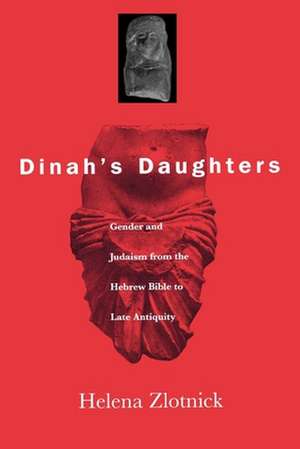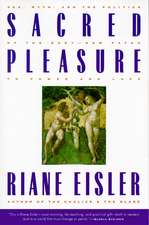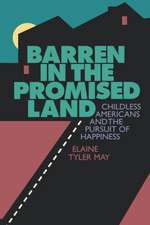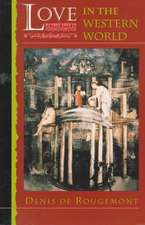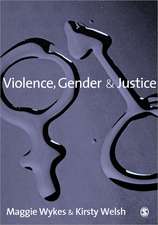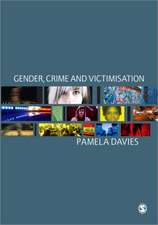Dinah`s Daughters – Gender and Judaism from the Hebrew Bible to Late Antiquity
Autor Helena Zlotnicken Limba Engleză Paperback – 13 mar 2002
Preț: 240.85 lei
Nou
46.09€ • 48.22$ • 38.28£
Carte disponibilă
Livrare economică 12-26 martie
Specificații
ISBN-10: 0812217977
Pagini: 264
Dimensiuni: 206 x 227 x 19 mm
Greutate: 0.41 kg
Ediția:New.
Editura: MT – University of Pennsylvania Press
Locul publicării:United States
Cuprins
Abbreviations
Introduction: Setting the Stage
¿Words of Warning
¿Sex, Status, and Homecoming: A Jewish Penelope?
¿Sin, Shame, and Sanctity: The Tale of the Lusty Wife and Rabbi Meir
PART 1: PROJECTIONS OF BIBLICAL SPHERES OF WOMEN
1. From Dinah to Cozbi: Rape, Sex, and Foundational Moments
¿From Rape to Parental Reticence
¿Why Not Marry a Shechemite?
¿Dinah and Matriarchal Betrothals
¿A Woman of the Wilderness: The Rape of Cozbi
¿Foundation Murders and Rapes
2. Patriarchy and Patriotism: Integrating Sex into Second Temple Society
¿Birth of a Nation: Marriage and Patriotism in Ezra
¿Private and Public in Yehud
¿Sin, Scripture, and Intermarriage
¿The Fate of Foreign Spouses
¿The Case of the Defiant Daughter: Jubilees' Dinah
3. From Esther to Aseneth: Marriage, Familial Stereotypes, and Domestic Felicity
¿Marriage between Gentiles, Model 1: Ahasuerus and Vashti
¿Marriage between Gentiles, Model 2: Haman and Zeresh
¿The Jewish Family
¿Intermarriage: Ahasuerus and Esther
¿Integrating Brides into the Family: Aseneth and Joseph
PART 2: VISIONS OF RABBINIC ORDER
4. Keeping Adultery at Bay: The Wayward Wife in Late Antiquity
¿Theologies and Theories of Sexuality: Roman and Rabbinic Perspectives
¿Suspecting Adultery
¿Preliminaries: Singling Out Adulteresses
¿The right to Accuse: Constantinian and Rabbinic Innovations
¿The "Other": Lovers and Aftermath
5. The Harmony of the Home in Late Antiquity: Jewish, Roman, and Christian
¿Perspectives on Intermarriage
¿Why not Marry a Goy?
¿Early Christianity and Marital Peripheries
¿Banning Jewish-Christian Marriage: Roman Legal Perspectives
Conclusion: To Die like a Woman? To Live like a Woman?
¿Is There a Jewess in Judaism?
Notes
Bibliography
Indexes
Acknowledgments
